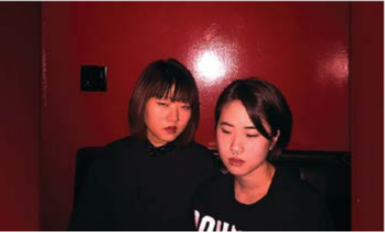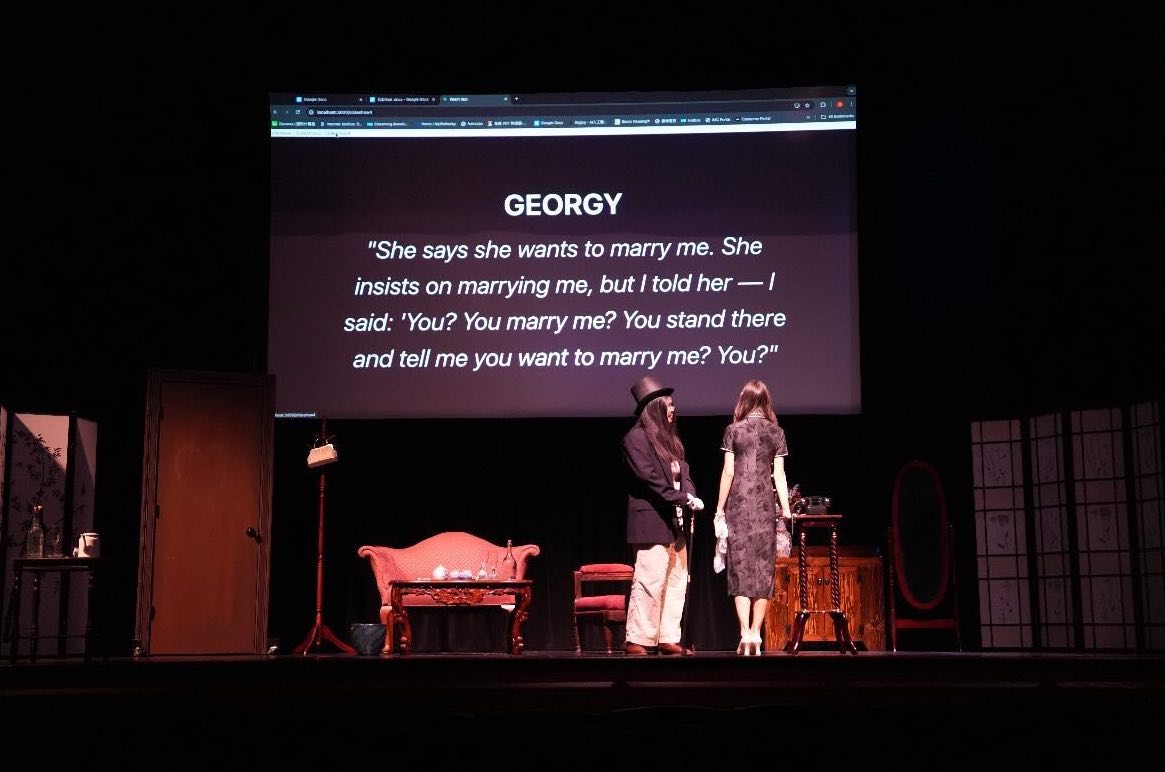At half past noon on March 1, Pendleton Atrium buzzed with students. Phi Sigma Society, the Korean Students’ Association and the Wellesley Asian Alliance sponsored the event, which had been widely publicized. Wellesley students packed onto the risers, crowded onto sofas and spilled over onto staircases and floors.
Two women, both clad in black and sporting exceptional eyeliner, walked to the front of the room and tapped their microphones. The first woman leaned forward and said, “Hi, I’m Olivia.” The other followed, “And I’m Esther. We’re the Sad Asian Girls.”
Olivia Park and Esther Fan first met at the Rhode Island School of Design, which they both currently attend. They were collaborating on a social media advertising campaign for a hip, new restaurant called Lura.
There was just one small detail: Lura was fake. In fact, the entire campaign, from the minimalist menus to the Instagram account of the fashionably hipster storefront, was not real. Lura was a kind of performance art, a “project… that highlights food as one platform on which millennials have choose to fulfill their needs for social belonging and validation.” Everything was satirical, sarcastic foodie bait built to trick mindless millennials into joining in on the fake hype.
The team ended up receiving more attention for the project than they ever anticipated. Publications such as Eater and The Atlantic’s Citylab picked up the story, generating widespread interest. Park mentions the influx of media attention as the turning point.
“This got us thinking: how can we use this kind of interaction with the public and social media as a way to get a more meaningful message out?” The next year, the Sad Asian Girls Club released its first work. Now, the pair goes by the moniker Sad Asian Girls (SAG). It is an art collective that seeks to address and challenge the stereotypes that Asian women face. Their first and most famous work to date is a video called Have You Eaten?, which shows scenes of the two eating in silence as an unseen woman, presumably their mother, critiques them about everything from their clothing to their choice of friends. The short film is a heartbreaking demonstration of the cultural differences that characterize the relationships of Asian-American women and their immigrant parents. “It has to do with…the generational gap when we’re raised in Western spaces and our parents don’t really understand the things we’re into.”
Upon its release, Have You Eaten? was even more successful than Lura, reaching tens of thousands of views on YouTube and garnering strong reactions from Asian- American women across the nation. The collective’s name recognition only increased after SAG’s second project, a poster campaign that declared “Asian women are not _____,” with blanks filled in with crowd-sourced submissions that included “your anime fantasy” and “passive, weak, and silent”. In their most recent project, SAG members wore white T-shirts with the words “Now more than ever: put Asian femmes in white cubes” and stood in front of popular art pieces at the Museum of Modern Art in New York City, a declaration of outrage about the lack of an Asian-American female presence in gallery spaces.
Again, major media outlets took notice. One particularly dramatic headline by the Huffington Post reads, “Meet The Art Collective Of ‘Sad Asian Girls’ Destroying Asian-American Stereotypes.” Fan and Park concede the media portrayed SAG in an exaggerated way, but say they continue to give interviews and talks at universities like Wellesley in order to spread awareness about their work.
Amidst all of the sensational headlines SAG has inspired, it is often hard to remember that Park and Fan are still just college students, about to begin their final projects in school. They are frank about their priorities.
“I think you’ll probably hear more about our individual work than Sad Asian Girls, really, in the next few months,” Park said. Even before this final stretch in their undergraduate careers, Park and Fan often had to integrate SAG into their class assignments in order to work on both. Now, with both fully focused on schoolwork, the future of Sad Asian Girls is suspended at least until they graduate.
Even so, Park and Fan are unsure about whether they want to continue with SAG after graduation.
“It’s something we thought a lot about,” Fan said.
On the whole, the two are well aware of their shortcomings and limitations. Fan and Park, who are both East Asian and heterosexual, acknowledge that they cannot truly represent Asian-Americans from other parts of Asia or those on the LGBQ+ spectrum. They never intended to bear the burden of speaking for an entire race and gender, yet SAG has emerged as a new de facto leader in Asian-American femme activism. Few others have achieved the same level of fame. After the incredible initial success of Have you eaten?, Fan and Park “weren’t sure what Sad Asian Girls was going to do in the long run, but… decided to just keep going.”
At Wellesley College, where the percentage of Asian- American/Pacific Islander students represent 25 percent of the student population, it is understandable how Sad Asian Girls’ visit generated such incredible hype. But separated from the media publicity and their refined online persona, Sad Asian Girls are just that: two frustrated girls who want to send a message about what it’s like being an Asian-American woman in today’s world.







